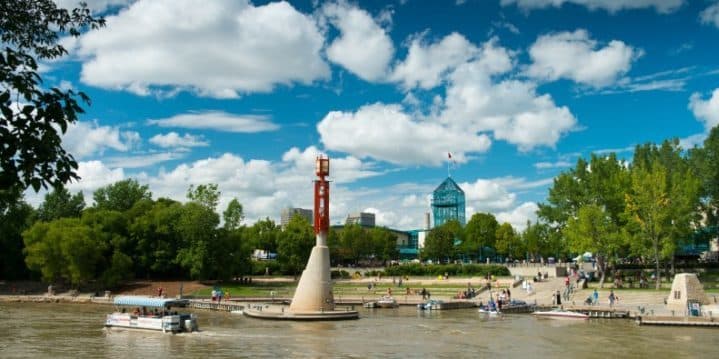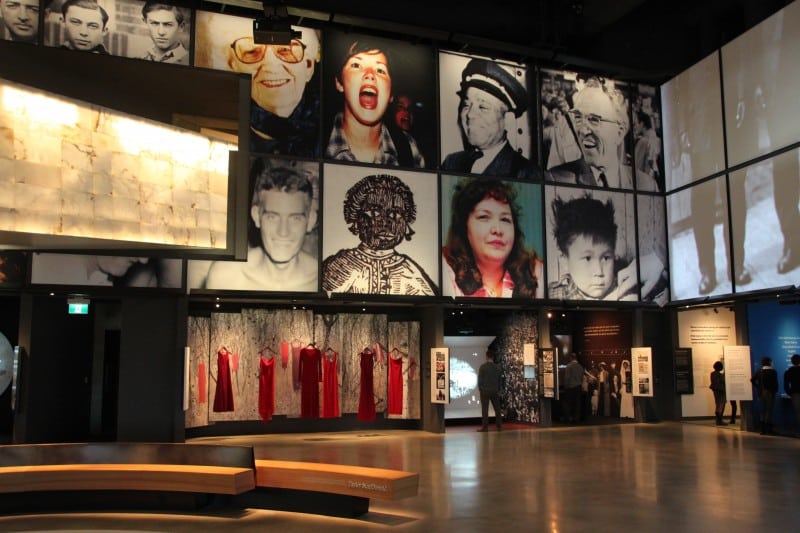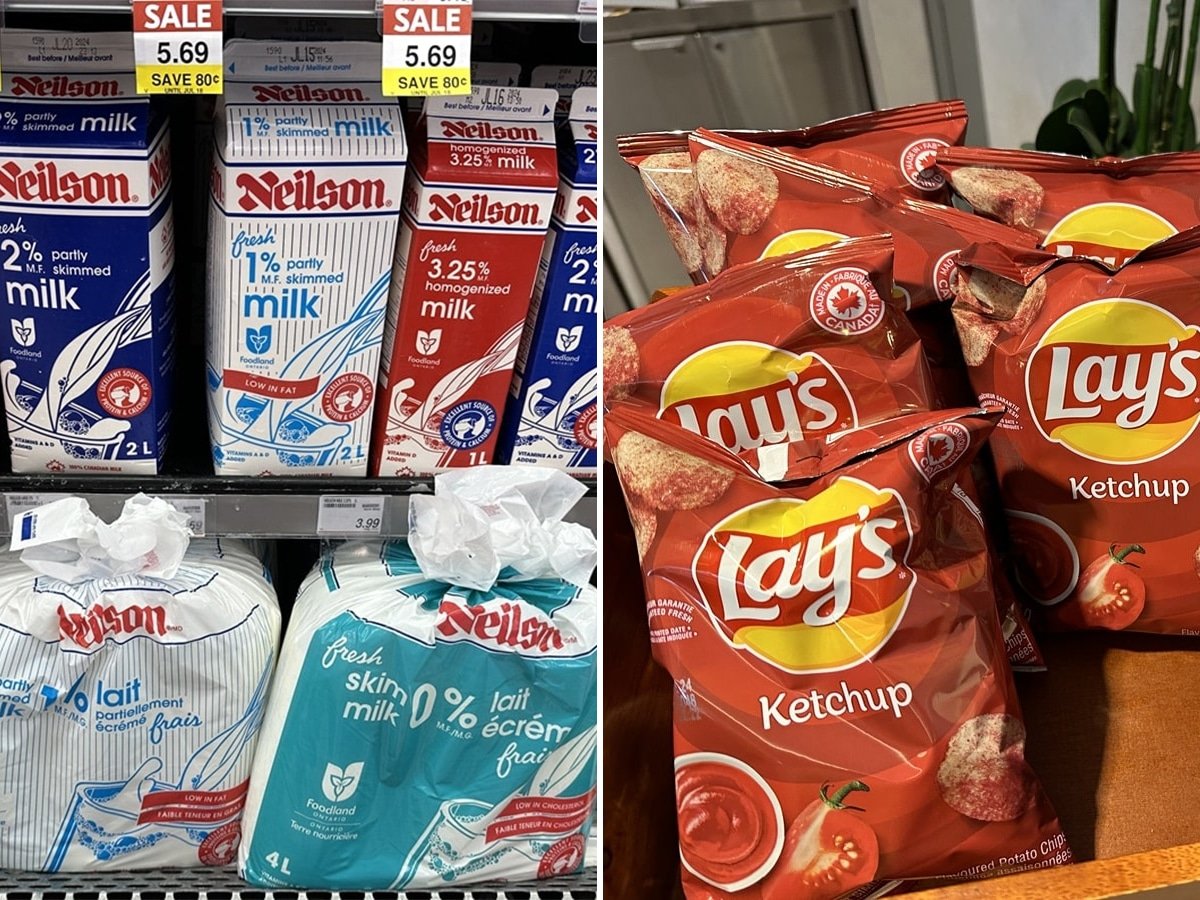
When I discovered that renowned minimalist composer Philip Glass was going to be featured live at Winnipeg’s New Music Festival at the end of January, my interest was decidedly stoked. I had been to Manitoba’s capital once before, as part of an adventurous road trip that also took me to Regina and Saskatoon.
During my previous visit I got to take a hard-hat tour of the then-not-yet-completed Canadian Museum for Human Rights, a very interesting site both for its incredible architecture as well as its thematic content designed to encourage dialogue and promote change for a better world. The chance to see the now-finished building—and also hear the Canadian debut of Glass’s “Symphony #11” and the performance of all 20 of his etudes at Centennial Concert Hall—was too tempting to pass up. With an added interest in a taste of how our Canadian neighbors fare in mid-winter weather conditions, I decided to head north to Winnipeg.
I wasn’t disappointed, to say the least. Here are seven reasons to visit Winnipeg, Manitoba, this year:

1. The Forks
Named for the place where the Red and Assiniboine Rivers join, the Forks began serving as a meeting place 6,000 years ago when indigenous peoples got together to trade. Later, European fur traders, Metis buffalo hunters, Scottish settlers, and riverboat and railroad worker followed suit. Today, the site is Manitoba’s number-one tourist destination, drawing some four million local Winnipeggers and visitors annually.
I began my look around at the Forks Market, which started out in the old days as two adjoining horse stables. After a $3 million renovation, the market is a bustle of activity with food emporiums, shops, and a local craft beer and wine kiosk with a wonderful array of choices.
Outside, the Forks is an all-weather destination. In mid-winter, I got to look at and enter some of the scattered warming huts, designed by architects from around the world. Starting in 2009, these huts became the bedrock of an annual art and architecture competition. Each year, after designs are submitted and winners selected by a jury of professionals, competition winners construct huts during a weeklong blitz to serve as structures where skaters, curlers and broom ballers on the Red River Mutual Trail can stop and relax. And on the Red River Mutual Trail: In spring through fall, the trail that holds the Guinness world record for the longest naturally frozen skating trail in the world is used by walkers, runners and cyclers.

2. The Canadian Museum for Human Rights
As the Gateway Arch is to St. Louis, the Golden Gate Bridge is to San Francisco and the Hollywood sign is to Los Angeles, the Canadian Museum for Human Rights is to Winnipeg. It’s the city’s iconic image. An easy walk from the Forks, the museum was designed by New Mexican architect Antoine Predock. The building’s imposing glass-and-stone facade is crowned by the Tower of Hope, a slender spire that offers a vertiginous look at the downtown area.
The architecture symbolically represents mankind’s climb from darkness to light as visitors make their way through 12 galleries (three Canadian, the rest global) via a series of alabaster walkways. The museum’s videos, interactive exhibits, media displays, and artifacts cover a wide range of subjects, like the treatment of indigenous peoples in Canada; genocides in Europe, Rwanda and Armenia; and historical approaches, contemporary concepts and hope for the future of human rights.

3. The Ice Castles
New to the city this year, the Ice Castles exhibition—located near the Forks—is a fairytale maze of hundreds of thousands of icicles hand-placed by ice artists. Walk through this frozen landscape of tunnels, towers and slides and take in the sight of structures 15-meters in the sky. At night the beauty of the ice is enhanced by music and a bank of LED lights glowing in a rainbow of colors.

4. The burgeoning food scene
Winnipeg is fast becoming one of Canada’s top foodie destinations, with help from an array of new brewpubs. Winnipeg Tasting Tours offers adventurous 4.5-hour looks at some of the city’s favorite microbreweries, along with alternate wine, food, cocktail, and distillery tours. Winnipeg Trolley Company, meanwhile, offers an “Ale Trail” experience that explores some of the brewpubs in the city’s exploding craft brew scene. With a diverse mix of communities calling the city home, Winnipeg’s culinary offerings are eclectic and include dishes like Vietnamese pho, Ukrainian pierogies, Filipino pancit, French-Canadian tourtiere, and a host of other foods. Local ingredients run the gamut of fresh summer berries, fish from the multitude of nearby lakes, wild rice, game such as elk and duck, and foraged mushrooms. My own visit introduced me to birch syrup, Manitoba’s answer to maple syrup.

My first night in town took me to Segovia Tapas Bar, patronized largely by a young clientele on the evening of my stop in. I enjoyed creatively conceived small plates of “Octopus Fabada,” “Foie Gras and Quince,” “Charred Cabbage Catalan with Iberico Lardo,” and “Boquerones and Anchovies.” Another hot spot, Deer + Almond, may have an unusual name (I asked but couldn’t come up with an explanation), but its menu of globally inspired food has made it popular with the food crowd. Deer + Almond chef Mendel Hitzer has also notably come up with a unique annual event simply known as RAW:almond. Now in its sixth year, the three-week-long dining experience in January/February features a pop-up restaurant on the frozen juncture of the city’s two major rivers, prepared by some of the city’s and Canada’s finest guest chefs. Even at $130 a ticket, all of the dinners were sold out this winter.
On a tour of the Design Quarter (see below), I popped into King + Bannatyne, a sandwich shop dedicated to serving hand-crafted, slow-roasted meat sandwiches. The beef brisket, for instance, is brined seven days in-house and cured with its own pastrami-style rub. Another restaurant making an impact, French-inspired Peasant Cookery, is famous for its housemade charcuterie boards. And for breakfast or brunch, Clementine is popular for its globally influenced dishes like Turkish eggs, duck chilaquilles and coconut curry mushroom toast.

5. The cultural scene
Culture vultures can get their fill of uplifting, life-enriching experiences in Winnipeg, starting at the Royal Winnipeg Ballet, Canada’s oldest company. The Winnipeg Symphony Orchestra, now in its 70th season, performs in the lovely Centennial Hall and stages the week-long New Music Festival in several locations throughout the city.
Theater and dance also have strong showings. The Design Quarter is a multi-block area of design-centered boutiques, businesses and galleries that are fun to explore. One of the city’s cultural gems, the Winnipeg Art Gallery (WAG), boasts the largest public display of contemporary Inuit art in the world (over 24,000 pieces). The museum is currently building an addition that will open in 2020 and house the collection in a new home to be titled the Inuit Art Centre.
A special WAG exhibit through April 22,”Insurgence/Resurgence,” features the work of 29 emerging-to-established indigenous artists doing incredible artistic things. WAG’s largest-ever show of indigenous art, the exhibit includes 12 commissioned pieces from across Canada’s territories and nations. Working in a variety of media, the artists have attempted to think about political insurgency and cultural resurgence and create works that radically shift the understanding of Canada both now and in the future.

6. The “Hermetic Code Tour” of the Manitoba Legislative Building
On the face of it, the tour may not sound exciting, but it’s actually near the top of my own “things to do in Winnipeg” list. The Manitoba Legislative Building is a trove of arcane symbolism with hidden numerological mysteries, hieroglyphics, sacred geometry, and architecture referencing Solomon’s Temple. The cryptology had been overlooked for nearly 100 years until Dr. Frank Alba rediscovered it. He often leads some of the tours offered by Heartland International Travel and Tours.

7. The day trips out of town…
Just an hour’s drive north toward Lake Winnipeg, the world’s 11th largest freshwater lake, is the town of Gimli, which was settled by Icelandic immigrants and has since maintained strong ties to the mother country. In addition to staging a three-day Icelandic Festival in August, the town screens a five-day summer film festival where patrons watch film on the beach with the screen positioned on the lake.
Six-hundred-and-twenty miles north of Winnipeg on the shores of Hudson Bay, Churchill likes to call itself the “polar bear capital of the world.” During a six-week window of bear-watching opportunity in October and November, polar bears make the trek from inland summer homes to the coast, brining with them bands of tourists who want to get a look at these huge creatures. Special vehicles named “tundra buggies” offer visitors a safe vantage point from which to view and photograph the bears. In off-season months, boat tours along the coast often spot the bears swimming in the bay or on land. In the months with darker night skies, visitors can also enjoy watching the Northern Lights. There once was a train that ran from Winnipeg to Churchill, but it recently ceased service when part of the track washed out. Currently, daily flights between the two cities are the only way for bear-watchers to travel expeditiously.
Lastly…
Annual events worth checking out include:
- Table for 2100 More in the Design Center brings together architecture, design and the culinary arts at a pop-up, outdoor dining experience that seats diners around 150 eight-top tables
- Farmer’s Feast is a five-course, gourmet dinner at St. Norbert Farmers Market (Manitoba’s largest) held in early September.
- Manyfest Food Truck Wars (also in early September) bring all of the city’s food trucks to one central location where diners can sample their wares and vote for their favorites.
For more, visit tourismwinnipeg.com.








So last year Darcee & I were in Alberta and met great people who wants us to visit them in Manitoba this year. So we have been researching it as to be honest I know nothing of this province.
As a classically trained musician, you had me at Winnipeg’s Symphony & Phillip Glass. I nearly lost my mind in Salzburg & Vienna so travelling to hear and explore amazing music is always on my bucket list.
I also love the Ice Castles exhibit. Even though I hate the cold, this looks totally amazing. That is definitely getting added to my bucket list for sure!
Hi Dave. You’d done a great job in highlighting the things to see and do in my hometown of Winnipeg. It is indeed quite the city!